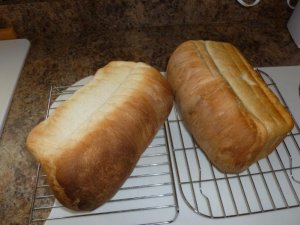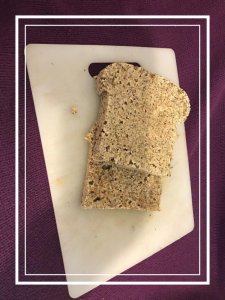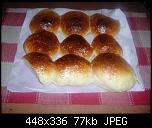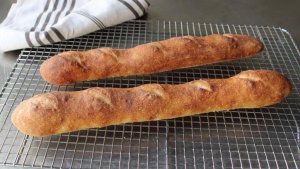Happyflowerlady
Vagabond Flowerchild
- Location
- Northern Alabama
Recently, I found a good bread machine at the thrift store, and I intend to start making my own bread this way. I have made two loaves so far, and both turned out pretty well.
The second loaf, dropped when it started to bake, but that was probably because I opened the top of the bread machine to see how it was doing, because the next time I looked the top had caved in somewhat.
The bread that I made was whole wheat flour, almond meal, flax meal, and flax, chia and sunflower seeds.
It has a rich and slightly sweet taste, and I enjoy eating it.
Since it is made with all fresh ingredients and has no chemicals or preservatives like commercial bread, I have been keeping it stored in the refrigerator.
I intend to look through some more recipes for different kinds of bread, and expand out into some sweeter breakfast breads, with raisins and cranberries and such in them, once I get more proficient in making bread.
I also am reading about making a sourdough starter, and then making sourdough bread; but I read that it can almost explode in the bread machine of it gets too much sourdough, so I need to learn more before I try that. Maybe I can just use the dough setting, and then bake it in the oven where it wouldn’t be hard to clean up if it over-runs the bread pan.
Does anyone else make their own fresh bread at home, and if so; do you make it from scratch or do you use a bread machine ?
The second loaf, dropped when it started to bake, but that was probably because I opened the top of the bread machine to see how it was doing, because the next time I looked the top had caved in somewhat.
The bread that I made was whole wheat flour, almond meal, flax meal, and flax, chia and sunflower seeds.
It has a rich and slightly sweet taste, and I enjoy eating it.
Since it is made with all fresh ingredients and has no chemicals or preservatives like commercial bread, I have been keeping it stored in the refrigerator.
I intend to look through some more recipes for different kinds of bread, and expand out into some sweeter breakfast breads, with raisins and cranberries and such in them, once I get more proficient in making bread.
I also am reading about making a sourdough starter, and then making sourdough bread; but I read that it can almost explode in the bread machine of it gets too much sourdough, so I need to learn more before I try that. Maybe I can just use the dough setting, and then bake it in the oven where it wouldn’t be hard to clean up if it over-runs the bread pan.
Does anyone else make their own fresh bread at home, and if so; do you make it from scratch or do you use a bread machine ?





